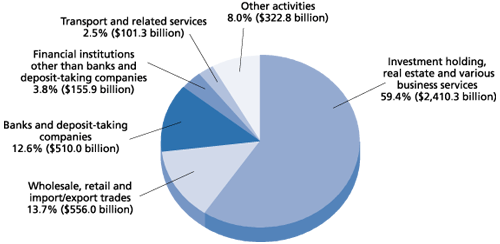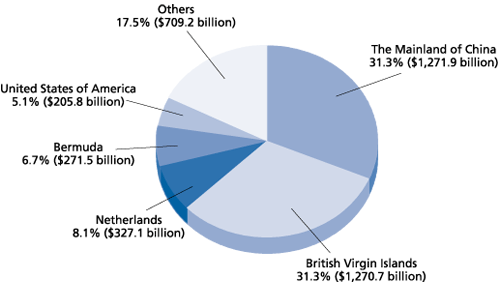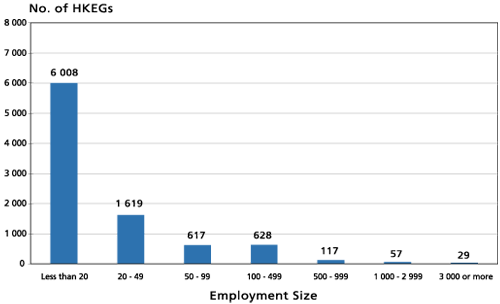|
Hong Kong's attraction as a place to do business is evident from the inflow of
foreign direct investment (FDI) and the number of regional headquarters and regional
offices in Hong Kong set up by companies outside Hong Kong.
A Census and Statistics Department survey shows that Hong Kong's FDI inflow in
2005 amounted to US$33.6 billion. According to the 'World Investment Report 2006'
released by the United Nations Conference on Trade and Development, Hong Kong
was the second largest recipient of FDI in Asia in 2005.
Hong Kong had 9 075 enterprise groups1 with inward direct investment in 2005,
comprising 245 in the manufacturing sector and 8 830 in the non-manufacturing
sectors. The market value of the stock of inward direct investment amounted to
$4,056.3 billion. Chart 3 shows the major economic activities of these enterprise
groups while Chart 4 shows source countries/territories of the inward direct
investment. Regarding employment, 66 per cent of them were enterprise groups
employing fewer than 20 persons (Chart 5).
| Chart 3 |
| Position of Inward Direct Investment in Hong Kong at |
| Market Value by Major Economic Activity of |
| Hong Kong Enterprise Group at end-2005 |
 |
|
| Chart 4 |
| Position of Inward Direct Investment in Hong Kong at |
| Market Value by Major Investor Country/Territory |
| at end-2005 |
 |
|
|
|
| Chart 5 |
| Number of Hong Kong Enterprise Groups (HKEGs) |
| with Inward Direct Investment by |
| Employment Size in mid-2005 |
 |
|
According to a survey conducted by the Census and Statistics Department, as at
June 1, 2006, 3 845 companies outside Hong Kong had set up either their regional
headquarters or regional offices in Hong Kong compared to 3 798 in 2005.

|